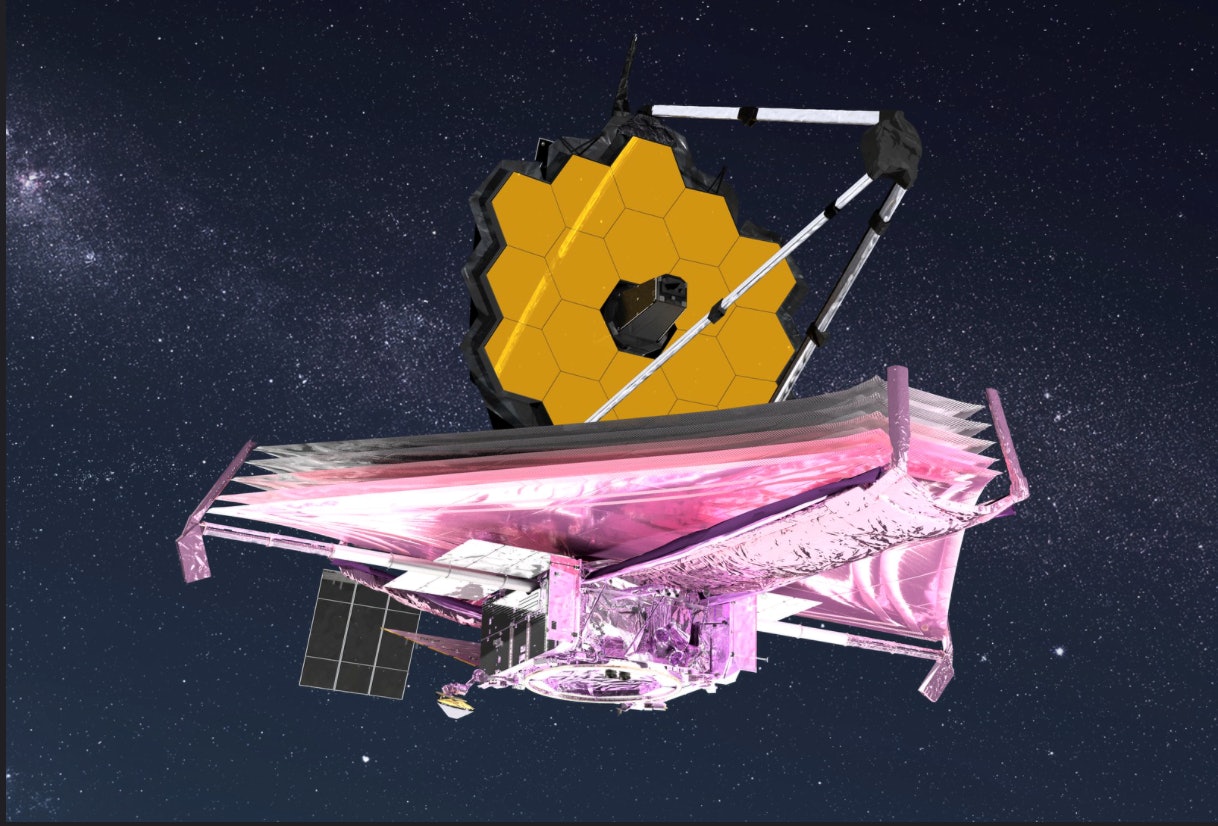
The James Webb Space Telescope is now at a temperature that would make the hardiest midwesterner flinch.
Both ESA and NASA announced that Webb is now at 7 Kelvin — or minus 447 degrees Fahrenheit and about as cold as the universe can get. Though announced Wednesday, April 13, the instrument actually reached that temperature on April 7, but scientists awaited confirmation before announcing it.
At this frigid temperature, the telescope will be able to fulfill a huge part of its mission: Staring back at the early universe for some of the first objects to emerge in the first few hundred million years after the Big Bang. For this, it relies on the Mid-Infrared Instrument (MIRI), one of the main “eyes” of the telescope.
Infrared observations rely on spectra outside what our eyes can see that correspond roughly to “heat” — in order to see objects, you need to drop the temperature way low or risk the telescope itself blinding out some of these fragile observations, a phenomenon known as the “dark current.” Along with staring back to near the Big Bang, this will allow astronomers to search for atmospheric details of exoplanets, monitor the behaviors of stars, and find galaxies that escape the telescopes that search in visible light, or only what our eyes can see.
After launch, the telescope — at a perch about a million miles past Earth in a gravitationally stabled point called L2 — deployed its sunshield and maintained its position. The sunshield protects the fragile instruments from the heat of the Sun and helped Webb’s payload drop to a temperature of about minus 298 Fahrenheit. The rest was up to the frigid vacuum of space and a device called a cryocooler, which electrically forces the temperatures down further and further.
Last week, MIRI had to drop to its “pinch point,” a gulf between minus 433 Fahrenheit and minus 443.
“The team was both excited and nervous going into the critical activity,” MIRI project manager Analyn Schneider said in the NASA announcement. “In the end, it was a textbook execution of the procedure, and the cooler performance is even better than expected.”
What’s next — The telescope, which launched on Christmas Day 2021, has had to pass a series of milestones, including unfolding itself and aligning its mirrors. Now that the MIRI instrument is at the right temperature, Webb can begin a new round of test observations. This will help ensure NASA and ESA personnel that the instrument is working correctly, and allow them to move toward the first true observations with scientific value, expected to come this summer.
While NASA is mum on precisely which targets will be first, astronomers champing at the bit to capture targets like TRAPPIST-1, a planetary system 40 light-years away with seven Earth-sized planets, some of which might be habitable.







